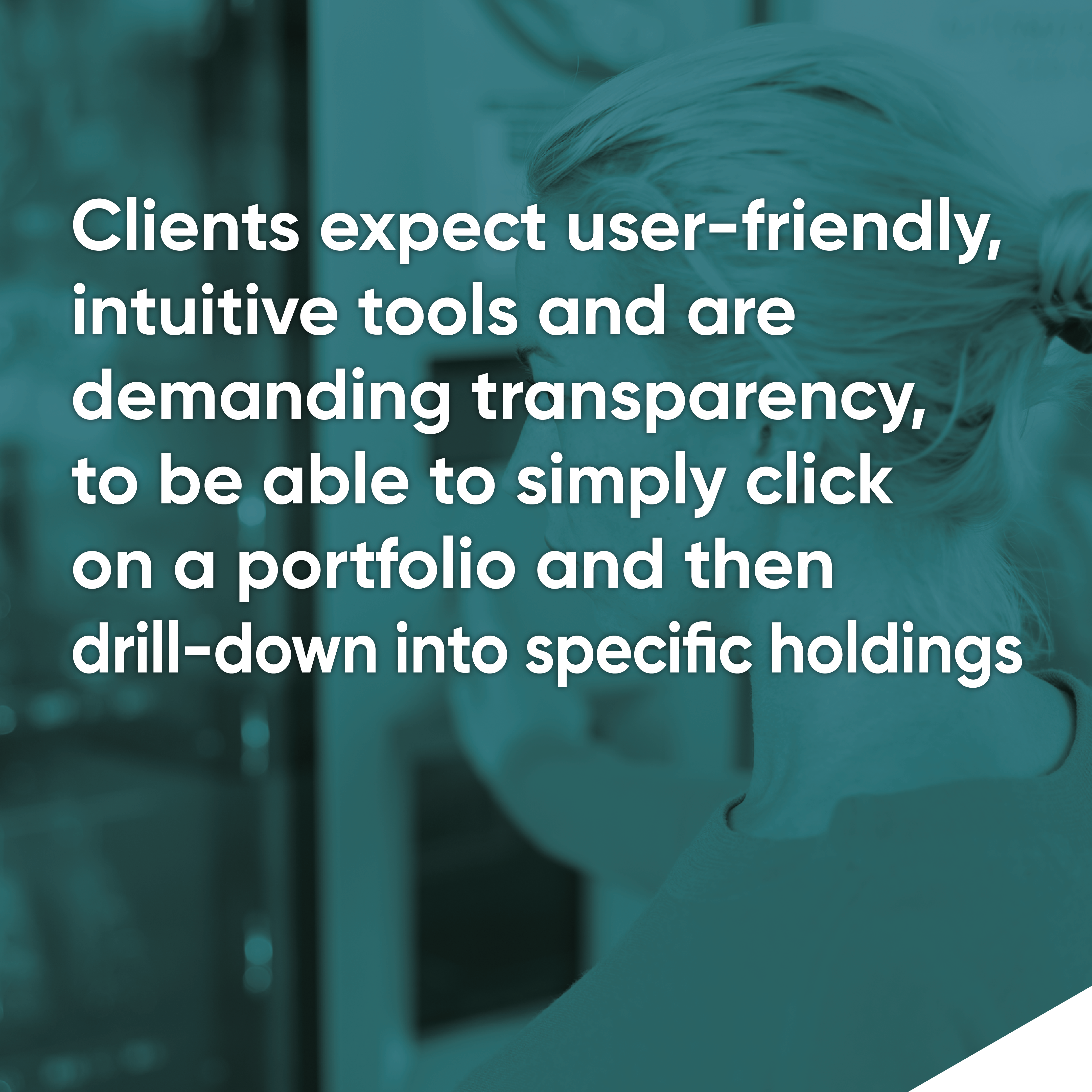With the likes of Amazon, Google and Netflix transforming the way we go about our daily lives, the COVID-19 pandemic is the most recent reminder that in a self-service world, digital-savvy consumers expect information immediately with the swipe of a finger. In fact, anything less is simply unacceptable.
Now more than ever, the investment management industry is looking to emerging technologies and digital solutions to create opportunities for change, to attract new business and to ultimately generate new revenue.
 Elevated expectations
Elevated expectations
Expectations have been elevated, so why then are two-thirds of investment management firms relying on systems that pre-date 2007 and the first-generation iPhoneOn the retail side, investors demand almost instantaneous access to assets and performance. Institutional clients are demanding more because they are used to getting faster, more transparent service on the retail side. However, more than half of firms still produce and blindly distribute large volumes of static reports to clients.
Why?
The reason is because many firms still have an abundance of legacy systems in place, with disparate data sources and silos, resulting in slower data analysis. So even producing the static reports is a tall order. These systems all have outdated interfaces that aren’t easy to use, flexible, nor scalable. Firms have not had the tools to deliver what stakeholders want, either tailored enough, or in an acceptable time frame.
Back to the future
In today’s society, customers expect an always-on, on-demand service. This cultural shift in expectations has seen industries change the way they deliver services. With the rise of services like Netflix, consumers can now access the entertainment they want, on-demand, through a self-service platform. What’s more, this service is personalized according to each viewer’s preferences and requirements.
The self-service revolution can also be extended to the asset management industry. Clients expect user-friendly, intuitive tools and are demanding transparency, to be able to simply click on a portfolio and then drill-down into specific holdings. Further, they want to look at a holding and then drill-down into transactions or see performance. They don’t want static information delivered on a report. They want to be able to pick from a list containing any report component and create a bespoke report with the information they care about.
How can we move on from producing and blindly distributing large volumes of static reports, to creating tailored content for a specific audience and distributing the content using intelligent online self-service platforms?
The end goal
The investment industry needs to strive to be able to give all stakeholders access to what they want, when they want it. By doing this the number of ad hoc requests is dramatically reduced and service levels increased. Asset managers need to look to technology partners to help consolidate the amount of data from disparate sources that will enable greater automation and faster delivery.
The key is to have an interface that is fully customizable to the needs of each stakeholder. It must be intuitive, highly visual, and adaptable. Self-service also needs control, so administrative users must be able to create user roles and rules on what people can or can’t see and do.
The case for self-service portfolio analysis platforms is clear. For businesses, there are efficiencies to gain and improvements to make; for clients, the benefits of increased transparency cannot come soon enough. Scalable and automated platforms have reduced the cost of doing business, clients’ expectations have been raised significantly and the regulators are queuing up to encourage competition from new entrants. A rapid shift to digitally enabled self-service is inevitable. The only question is, who will seize hold of the opportunities first?
1 – CEB Tower Group
Disclaimer: The information contained in this communication is for informational purposes only. Confluence/StatPro is not providing, legal, financial, accounting, compliance or other similar services or advice through this communication. Recipients of this communication are responsible for understanding the regulatory and legal requirements applicable to their business.
{{cta(‘0246bd3c-2e00-4f92-b357-4b2348bafdb6’)}}